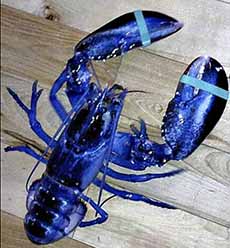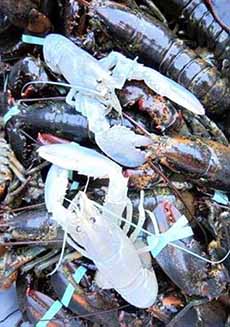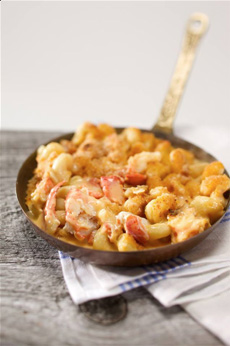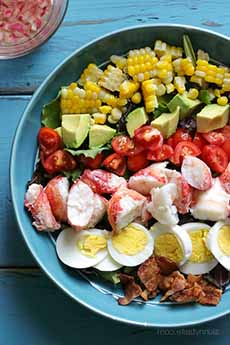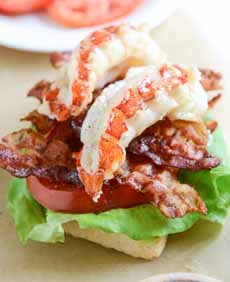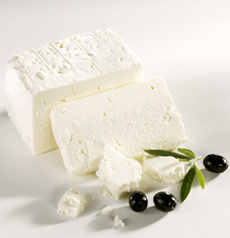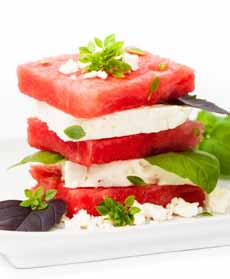|
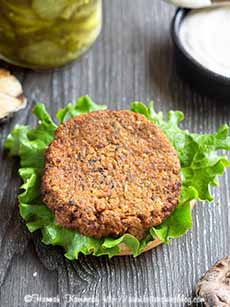
[1] Ready for the air fryer: a wonderfully flavorful veggie burger made from chickpeas and shiitake mushrooms (photos #1, #2, #3, #4, #7 and #8, plus recipe, © Hannah Kaminsky | Bittersweet Blog).

[2] Grilled and adorned with arlicky aïoli, lettuce, tomato and pickles.
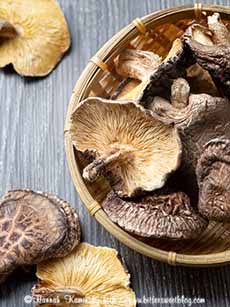
[3] Dried shiitake mushrooms are part of the magic.
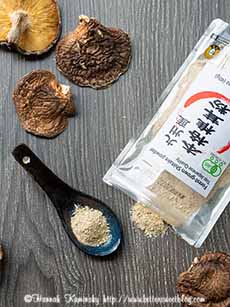
[4] Shiitakes are also used in their powdered form.

[5] It’s easy to make aquafaba: Just soak chickpeas overnight (photo © Polina Tankilevitch | Pexels).
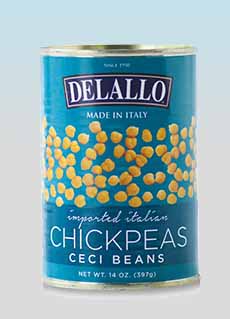
[6] Save the liquid when you drain chickpeas: It’s aquafaba† (photo © Delallo).

[7] Ready for dessert? Get the book: Super Vegan Scoops: Plant-Based Ice Cream for Everyone!

[8] It’s a great gift for an ice cream lover who wants less or no dairy.
|
|
Our colleague Hannah Kaminsky is a wonderful vegan cook and author. Her latest book, Super Vegan Scoops!: Plant-Based Ice Cream for Everyone, is a great gift for ice cream lovers who prefer plant-based options. Sweet Heat Chipotle Pecan ice cream? Cucumber Raita frozen yogurt? Yes, please!
Today, Hannah shares an air fryer or oven recipe for veggie burgers made with chickpeas and mushrooms join forces to create burgers that are crisp on the outside, tender on the inside. And bursting with an intense depth of savory flavor, thanks to her “secret ingredient”: shiitake mushroom powder.
UMAMI POWER!
Hannah loves the umami flavor from Sugimoto brand* dried shiitake mushrooms, in both whole and powdered formats.
It does great things to veggie burgers. “No one will guess your secret ingredient,” says Hannah, “but everyone will know in an instant that these aren’t your average, humdrum veggie burgers.”
Even if you don’t like mushrooms, she says, “shiitake powder will become your new best friend. Mushroom haters needn’t fear these spores; unlike dried porcini, shiitake can enhance the taste of your cooking without adding the funky, earthy mushroom flavor that turns many away.”
Hannah doesn’t use vegan cheese in this recipe, but takes a different approach.
“Melting sumptuously into those supple centers [is] a generous dollop of homemade garlicky aïoli, infused with even more shiitake goodness.
While the spread comes together in mere minutes, she recommends making it in advance and keeping it on hand—not just for the burgers, but “for all sorts of sandwiches, using as a dip for French fries, or drizzled over salads for a creamy dressing. In fact, you might want to double that recipe right off the bat. It’s irresistibly tempting to pour it on thick.”
Holy shiitake! Get cooking! You need to let the dried shiitakes soak overnight.
RECIPE: SHIITAKE MUSHROOM BURGERS
Ingredients
For The Shiitake Mushroom Patties
1 ounce dried shiitake mushrooms, soaked in cold water overnight
2 tablespoons olive oil, divided
1 medium shallot, diced
1 clove garlic, minced
3 scallions, thinly sliced
1 (15-ounce) can chickpeas, drained (aquafaba† reserved)
2 tablespoons ground flaxseeds
1 tablespoon red miso paste
1 tablespoon reduced sodium soy sauce
1 tablespoon black Vinegar or balsamic vinegar
1/2 teaspoon smoked paprika
1/2 teaspoon ground black pepper
1/2 teaspoon salt
For The Umami Shiitake Vegan Aïoli
If you prefer the conventional mayonnaise aïoli, here’s a quick recipe using store-bought mayonnaise.
1 tablespoon shiitake mushroom powder
2 tablespoons hot water
1 clove garlic
1/4 Cup aquafaba
2 tablespoons lemon juice
3/4 cup avocado or grapeseed oil
For Serving
5-6 sesame seed hamburger buns
Green leaf lettuce
Sliced tomatoes
Thinly sliced red onion
Pickles
Preparation
You may wish to prepare the aïoli (step 6) in advance. Then, soaking the mushrooms overnight, and…
1. MAKE the burgers. Begin by thoroughly draining the mushrooms, reserving the liquid for another recipe. It’s great for making soup or cooking rice, for starters. Remove the stems, roughly chop the mushroom caps, and set aside.
2. ADD 1 tablespoon of the oil to a medium sauté pan over medium heat. Once shimmering, add the shallot and garlic. Cook for 4-6 minutes, until aromatic and lightly golden brown.
3. TRANSFER the cooked vegetables to the bowl of a food processor, along with the mushrooms, scallions, chickpeas, flaxseeds, miso, soy sauce, vinegar, paprika, pepper and salt. Pulse until thoroughly combined and broken down into a thick paste, but not completely smooth. There should still be a good bit of texture remaining, sort of like falafel.
4. DIVIDE the mixture into 5-6 equal parts (depending on how large you want the burgers), using lightly moistened hands to shape them into balls. Place them on air fryer racks or baking sheets lined with aluminum foil, pressing them down gently to about 1/2-inch in thickness. Brush lightly with the remaining oil.
5. AIR FRY at 350°F for 14-16 minutes, flipping halfway through. For a conventional oven, bake at 375°F for 18-22 minutes, flipping halfway through. The burgers should be lightly brown around the edges when done. Meanwhile…
6. PREPARE the aïoli. Combine the shiitake mushroom powder with the hot water, stirring thoroughly. Let stand for 10 minutes to rehydrate and thicken.
7. TRANSFER the mushroom mixture to the blender along with the garlic, aquafaba, lemon juice and salt. Pulse to incorporate. Once combined, run the blender at medium speed while slowly drizzling in the oil, allowing it enough time to emulsify. The mixture should become light in color, velvety smooth, and thick enough to spread. Transfer to an airtight container or glass jar. Refrigerate if you won’t be using it immediately; it will keep in the fridge for 5-7 days.
8. ASSEMBLE the burgers. Cover the bottom of each bun with lettuce and place one patty on top. Add a generous dollop of shiitake aioli, followed by tomatoes, red onion and pickles as desired. Finish with the top bun and enjoy right away.
15 MORE SHIITAKE MUSHROOM RECIPES
Starters
Chinese Egg Rolls
Clear Japanese Soup With Shiitake Mushrooms
Crab Meat Spring Rolls
Japanese Chicken Noodle Soup
Tom Kha Gai Soup
Mushroom Toast
Squash Soup Bowls Stuffed With Shiitakes & More
Tom Yum Noodle Soup With Tofu
Truffled Matzoh Ball Soup
Mains
Chicken & Udon Noodles In Lemongrass-Saké Broth
Grilled Cheese & Mushroom Sandwich
Mushroom & Radicchio Savory Bread Pudding
Mushroom Fettuccine With Shiitakes
Penne Pasta with Lemon Infused Vegetables and Ricotta Salata
Veal Scaloppine With Goat Cheese & Shiitake Mushrooms
> THE DIFFERENT TYPES OF MUSHROOMS
|









